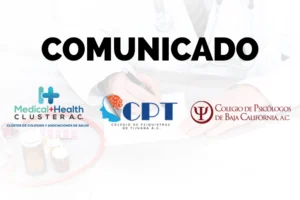En atención a la creciente preocupación sobre la confianza en...
Leer más
Association Between COVID-19 Booster Vaccination and Omicron Infection in a Highly Vaccinated Cohort of Players and Staff in the National Basketball Association

Evaluation of COVID-19 vaccine booster effectiveness is essential as new variants of SARS-CoV-2 emerge. Data support the effectiveness of booster doses in preventing severe disease and hospitalization; however, the association with reducing incident SARS-CoV-2 infections is not clear.1-3 We compared the incidence of SARS-CoV-2 infection in players and staff of the National Basketball Association (NBA) who did vs those who did not receive a booster dose.
Players and staff who were tested more than once between December 1, 2021, and January 15, 2022, were included. Individuals were tested via the nucleic acid amplification test when symptomatic, after a known exposure, or during daily enhanced surveillance testing triggered by multiple cases on 1 team. Player vaccinations were not mandated. Staff were required to be fully vaccinated by October 1, 2021, and to have received a booster dose by January 5, 2022, if eligible. Masking requirements were similar between players and staff, with the exceptions of players unmasking on court and head coaches unmasking during games.
Genome sequencing was performed for all infections to determine the SARS-CoV-2 variant, but some sequencing failed due to inadequate sample volume, viral load, or genome coverage. Vaccination status was considered as a time-varying exposure; individuals could dynamically move through multiple categories during the study and contribute person-days accordingly. Fully vaccinated was defined as 2 doses of a 2-dose vaccination course (Pfizer-BioNTech BNT162b2 or Moderna mRNA-1273) or 1 dose of the 1-dose vaccination course (Johnson & Johnson JNJ-78436735)4 and fully boosted was defined as 14 days after receiving any booster dose.
Hazard ratios (HRs) from an Andersen-Gill Cox proportional hazards model5 compared time to infection for individuals who were fully vaccinated vs those who were fully boosted. Infections occurring after vaccination but prior to 14 days after vaccination were censored. The outcomes included confirmed SARS-CoV-2 infections, symptomatic infections, COVID-19 hospitalizations, and COVID-19 deaths.
The models were adjusted for age and prior SARS-CoV-2 infection and the analyses were performed using SAS version 8.2 (SAS Institute Inc) and R version 4.1.1 (R Foundation for Statistical Computing). Statistical significance was defined as a 2-sided P < .05. The Advarra institutional review board determined the study met criteria for exemption status. Individuals signed health information authorizations allowing collection, storage, and use of health information by the NBA for monitoring purposes, including disclosure to medical experts.
Of 2613 players and staff, 67% were followed up the entire 45-day study period, with 74 165 person-days contributed by fully boosted individuals and 10 890 person-days by those who were fully vaccinated but not boosted though eligible to receive a booster dose. From the start to the end of the study period, the percentage of individuals who were fully vaccinated and eligible for a booster dose decreased from 26% (n = 682) to 8% (n = 205) and the percentage of individuals who were fully boosted increased from 49% (n = 1282) to 85% (n = 2215); the remainder were in other categories, such as fully vaccinated but not yet eligible for a booster or within 14 days of their booster dose. In the overall cohort, 88% were male with a median age of 33.7 years (IQR, 27.3-45.2 years; Table 1).
Individuals who were fully boosted experienced 608 confirmed SARS-CoV-2 infections and were significantly less likely to be infected than fully vaccinated individuals who were booster eligible and had not received a booster, who had experienced 127 confirmed infections (adjusted HR, 0.43 [95% CI, 0.35-0.53], P < .001; Table 2). The secondary analyses evaluating symptomatic infection showed a similar association (adjusted HR, 0.39 [95% CI, 0.30-0.50]; P < .001). No hospitalizations or deaths occurred. Omicron was the dominant variant, representing 93% of 339 sequenced cases.
This study found that in a young, healthy, highly vaccinated cohort frequently monitored for SARS-CoV-2, booster vaccination was associated with a significant reduction in incident infections during the Omicron wave. Study limitations include generalizability to older populations and the possibility that some infections may have been undetected in the absence of daily surveillance testing. This is a population that was recently boosted (median of 20 days as of December 1, 2021) and may not reflect waning efficacy over time. Surveillance testing in this population captured both symptomatic and asymptomatic infections, which differs from studies of the effectiveness of boosters that did not assess risk of asymptomatic infections.2,3 Continued research is required to assess the need for additional booster doses beyond a single booster dose.
Créditos: Comité científico Covid




